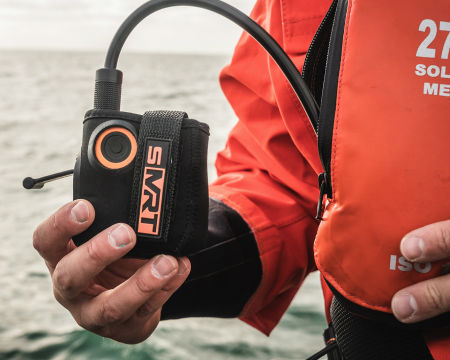What Is AIS, VHF and DSC?.
There are many different technologies that can be used to effectively transmit the message that a man has fallen overboard to a nearby vessel. Here, we take a closer look at a few of the available options, functionalities, and benefits.
- AIS stands for Automatic Identification System, and is a way to track ships using radio waves.
- VHF stands for Very High Frequency, and is a type of radio wave used for communication between people on land.
- DSC stands for Digital Selective Calling, and is a method of transmitting data over radio waves.
How does AIS work?
AIS transponders and AIS antennas are used by vessels equipped with AIS. Transponders are small devices that are attached to the vessel's hull and emit a unique identification code. When a ship enters a specific area, its transponder emits a specific frequency, which is detected by nearby receivers. Receivers decode the data and transmit it to a central computer.
Antennas are similar to transponders in that they do not have to be attached to the boat's hull. They are instead installed on towers and masts and broadcast a signal at a specific frequency. Antennas are typically found on larger vessels that travel long distances, such as cargo ships and cruise liners.
What are the advantages of AIS?
The use of AIS has the advantage of providing ship operators with real-time information about MOBs or other vessels operating in the area. Vessel traffic services (VTS) can provide safe navigation assistance to vessels at sea by using AIS. Vessels equipped with AIS transmit position reports to shore stations via satellite radio frequency, where they are processed and displayed.
How does DSC work?
DSC is a system that transmits information about vessels using digital technology, such as their location, speed, course, and destination. The ship broadcasts a signal, which is picked up by receivers installed along the coast. These receivers transmit the data to a central computer, where it is stored and analysed.
What are the advantages of DSC?
The advantage of using DSC is that it provides real-time tracking of vessels, which means that if something happens to the ship, the receiver picks up the distress call and immediately notifies authorities. Vessels equipped with DSC have a much higher chance of being rescued than those without.
How does VHF work?
VHF stands for Very High Frequency. It is a type of radio frequency that operates at frequencies higher than those used for AM/FM radio. These frequencies are used for communication purposes. In order to use these frequencies, a special device called a transceiver is necessary. The transceiver converts the signal from the transmitter to a usable signal. A receiver then receives the signal and converts it back to sound.
What are the advantages of VHF?
The advantage of using VHF is that it transmits over long distances without being affected by obstacles. However, there are some disadvantages to using VHF. One disadvantage is that the signals can interfere with each other if they are close together. Another disadvantage is that the signals do not travel well through water.
- What is a Personal Locator Beacon (PLB)?
- How Does a Personal Locator Beacon Work?
- What are the different types of PLBs?
- What are Local Area Systems?
- What is ELIFE?
- What is a True Water Activating PLB?
- What is the difference between a PLB and an EPIRB?
- What Is AIS, VHF and DSC?
- What is a 406 MHz PLB?
Contact Us
Find Us
Marine Rescue Technologies Limited
Wescom Group,
Unit J1, Springfield Way,
Anlaby, HU10 6RJ


